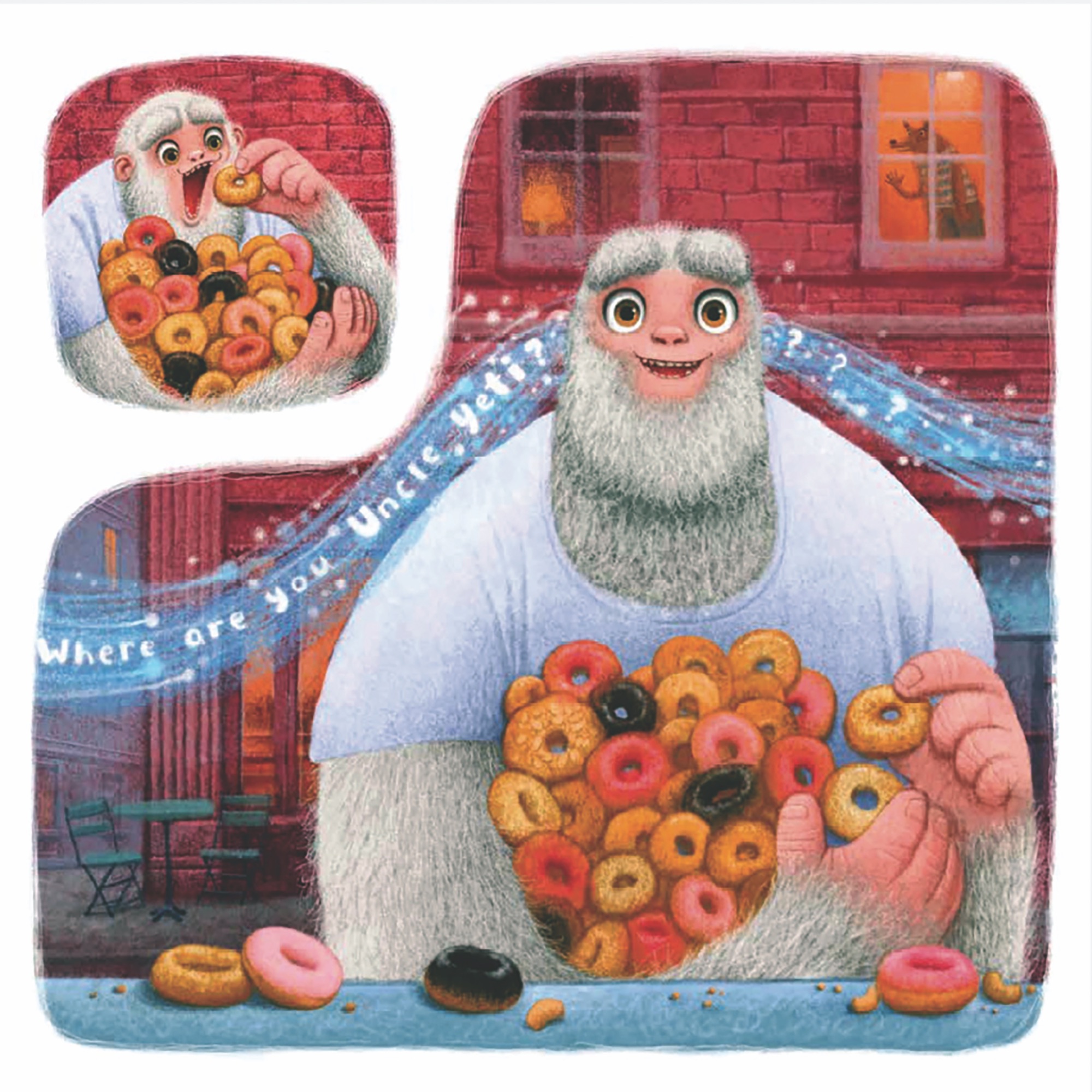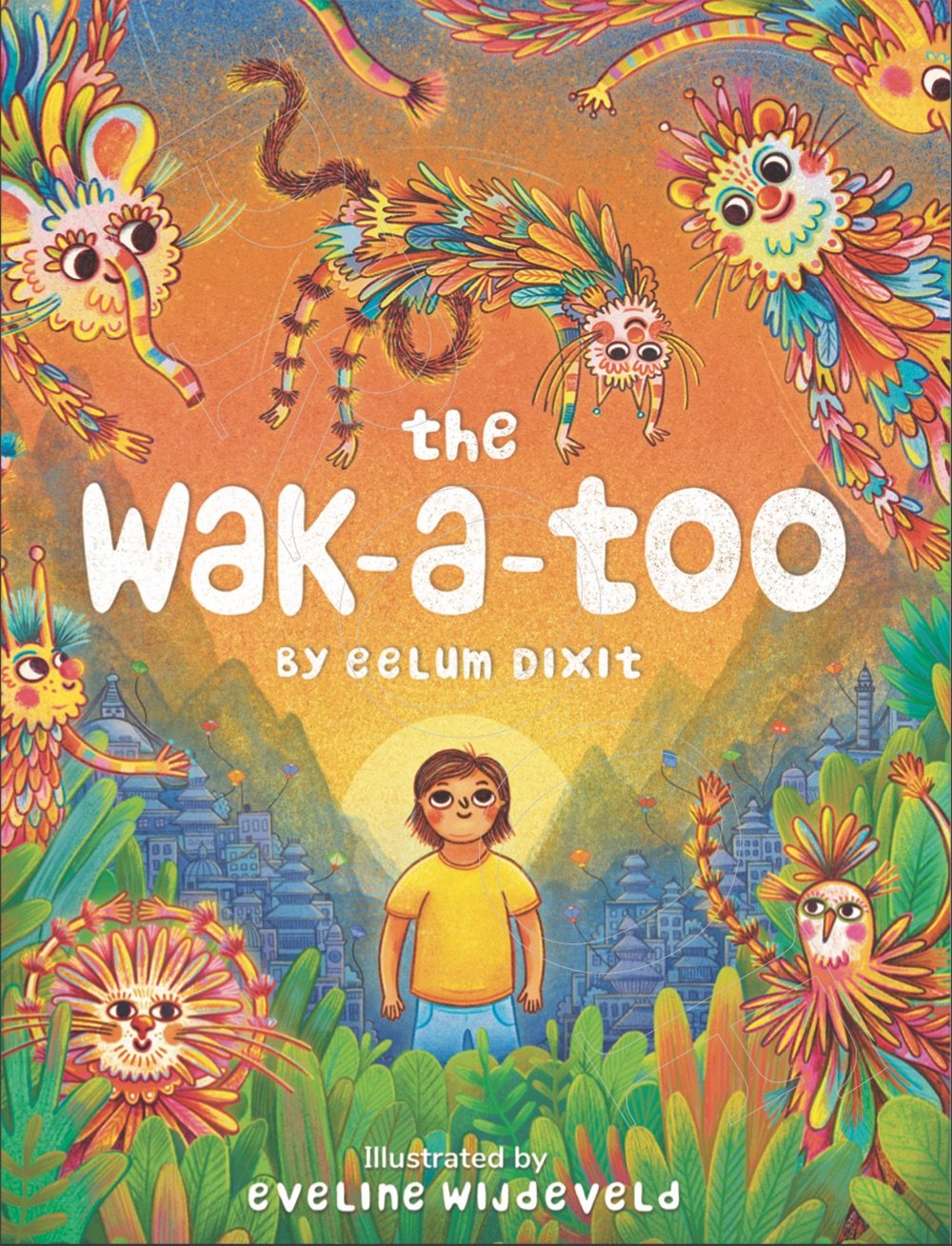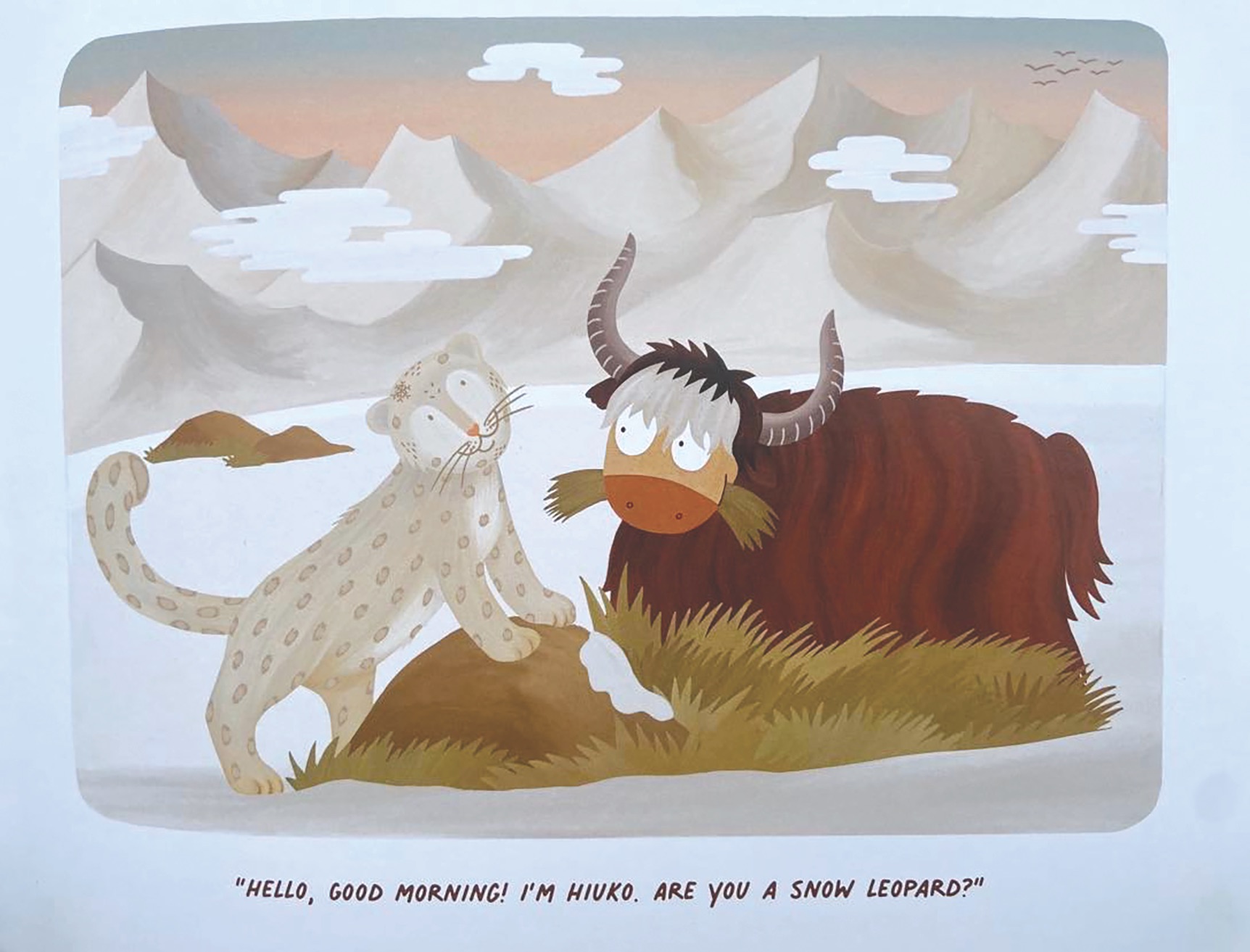Adventures of a little dumpling named Momo (and other books)
Nepali myths and characters are the subject of new international children’s books
In the high Himalaya of Nepal, a little dumpling child Momo wakes up to the sight of the majestic mountains. While on an adventure to climb one of the peaks, Momo receives an invitation from a family member via postcard to travel to a different land with a promise of an exciting undertaking.
Thus begins the journey of Momo to New York to find Uncle Yeti who went there to sample the various food the city has to offer.
Washington DC-based Nepali-American author Sibani Karki chronicles Momo’s voyage to the Big Apple in a new children’s book, Momo and Uncle Yeti: Adventures in New York City. Her poetic prose is accompanied by artist Oleg Goncharov’s spectacular illustrations which make the book a visual treat for both children and adults alike.
“The book represents my own journey to the US as a child from Nepal and also some of my favourite things in life: travel, good food, cultures and family,” says Karki, who moved to the US when she was 11.
New country meant new people, new experiences, and living between two cultures. It was also an opportunity to connect with and share her own Nepaliness. And one way Karki does that is through food.
As any immigrant can attest, food brings one closer to home. With food, one makes new friends, can court lovers, understand a new country, hold on to memories of a home left behind.
“Momo parties happen more frequently here than in Nepal,” says Karki. “More than food, momo is a feeling. And having a momo party is an opportunity to get together, share stories, and reconnect with friends and family.”


As someone who enjoys myths, Karki knew she had to include the Yeti as one of her characters. However, Karki’s Uncle Yeti is not scary. He is jolly, has an insatiable hunger and loves getting lost in new cities while hunting for new tasty food.
Like many Nepali children, Karki did not grow up with a book culture at home and developed a reading habit only after moving to the US. At bookstores, she often found herself in the children’s book section leafing through the colourful pages with vivid images.
But what was missing in the books was the representation of characters with life experiences and culture people like she could relate to.
She started writing the story of Momo and Uncle Yeti in 2016 while at Columbia University. But it was not until the pandemic that she finally got a chance to sit down and collate it into a book.
While she ran the rhymes by her family, she struggled to find an artist for the illustrations. A few collaborations fell through as the art style wasn’t what she was looking for. Then, a chance meeting with designer Larry Issa at a farmers' market helped her connect with illustrator Oleg Goncharov.
There was a catch: Goncharov did not speak English, and lived in Crimea. So, the entire conversation between the two happened on Google translate. One cannot tell, leafing the book, of the struggle to communicate between the two.
"Working on the story of Yeti and Momo was a completely new experience for me. Despite the fact that I have been illustrating books for more than 12 years, I have not yet worked on a project in which fairy-tale characters would travel to the real sights of the city. So the idea to add more fabulous creatures besides Momo and Uncle Yeti was born. And dragons, fairies and others appeared on the pages of the book. I am very glad that Sibani supported this idea," says Goncharv.
From realistic depictions of the airports and landmarks in Kathmandu and New York to a more creative approach in assimilating animals and humans, Goncharov’s gorgeous images add another dimension to Karki’s words.


“From my experience with my nieces Kaia and Yara, I know that children sometimes take to the smallest characters in the book. They will notice the small ladybug rather than the big main character. Since it is a children’s book, not everything had to make sense. The anthropomorphism in the book is also to show the cohesion of animals and humans,” she explains.
Coming from a close-knit family, the names of relatives are scattered through the book. Pramila Soon Pasal is named after her mother, Shyam Chiya Pasal after her father. The names of her brother, sister-in-law, husband, nieces also make an appearance.
Karki now works as a gender specialist at the World Bank and has also included other aspects she is passionate about in the book. At Times Square where Momo goes looking for Uncle Yeti, the usual advertisements are peppered with social messages including those of gender equality, inclusivity and positivity.
Rosy cheeks with big inquisitive eyes, Karki’s Momo enjoys discovering new places, eating new food, solving puzzles, and is gender neutral. “Often, we see that adventure is associated with boys. But I want the children to see themselves in the pages and connect with the characters. So, Momo is not a he or she or they, Momo is just Momo,” she says.
While New Yorkers have a reputation for being brusque, there is also a sense of community in the city’s diversity. This comes across as Momo runs (hops?) around the city looking for Uncle Yeti.
Karki’s Momo and Uncle Yeti are very Nepali and the high-rises of the Himalaya and New York will make it relatable for not only the global Nepali audience but also those who are familiar with Nepal – weaving a sense of adventure, appetite for food and travel, appreciation of one’s family, and tolerance of different cultures.
The book is available on Amazon and through momoandyeti.com. It will soon be launched in Nepal.

Momo and Uncle Yeti: Adventures in New York
Sibani Karki
Illustrations by Oleg Goncharov
Pathways LLC, 2022
38 pages
$19.99
Sathi
Sathi is an exquisitely illustrated bilingual book for children and adults that tells a fairy tale story of an abandoned dog, who is scalded on Kukur Tihar by a city shopkeeper. Sathi, the dog, is miserable and in pain as she licks her wounds by a garbage pile, until she finds a benefactor who takes her to the real-life animal shelter, KAT Centre in Kathmandu. She is cared for at the dog home, and the burns on her back heal slowly. She makes friends with other dogs at the shelter who have also been attacked, abandoned, or hit by cars, and finally emigrates to a new forever home in Canada.
Sathi: The Street Dog from Kathmandu, Nepal
साथी: काठमाडौँ सडकको एक कुकुर
Julu
Illustrations by Jenny Campbell
Nepali translations by Angeela Shrestha and Suraj Shrestha
Vajra Publications, 2021
44 pages
$14.95

The Wak-a-Too

Another international children’s book featuring Nepal is the soon-to-be published The Wak-a-Too by Nepali film-maker Eelum Dixit (who himself became a father recently), and is lavishly illustrated (pictured, right) by the US-based Dutch designer Eveline Wijdeveld. The book begins with an ornithological overview of Nepal, including its urban birds and then takes children into a dreamlike fantasy world of the Wak-a-Too. At the end of the book, young readers are asked to draw their own versions of the imaginary Wak-a-Too and post them @thewakatoo on Instagram and Facebook.

The Wak-a-Too
by Eelum Dixit
Illustrated by Eveline Wijdeveld
Very Tale Books, 2023
45 pages
Hardback: $27.99
Are You a Snow Leopard?

Written by Sandra Shiwani Van Doesburg and illustrated by Kanchan Burathoki, Are You a Snow Leopard? tells the story of Hiuko, a snow leopard who goes looking for others of her kind to befriend. As she traverses through the mountains, she meets and befriends other animals found in Nepal: Ooney, the yak, Chulbuli, the blue sheep, Jooney, the black bear, Bhukule, the red panda, and finally Tiktikey, the snow leopard.
Sandra and Kanchan met in fourth grade in a boarding school in Nepal. After high school, Kanchan went to Boston and Sandra to Rotterdam. They reconnected 15 years later to work together on the story of Hiuko, which primarily has an underlying message of diversity and inclusion. The book also features photographs by renowned wildlife photographer Chungba Sherpa.

Are You a Snow Leopard?
Sandra Shiwani Van Doesburg
Illustrations by Kanchan Burathoki
Van Doesburd Creative Works, 2021
28 pages
Hardback: Rs1,850 | Paperback: Rs1,550

The Ambassador’s Dog
This delightful children’s book is the tale of Lo Khyi (Lo for Mustang, and khyi, which fortuitously means both ‘dog’ and ‘happiness’ in Tibetan), a pup that dared to dream big and who went on to become the source of happiness for Scott who adopted the dog to America after his tenure in Nepal. ‘Scott’ in the book is Scott H DeLisi, who served as the real-life American ambassador in Kathmandu from 2010-12. The Ambassador’s Dog has a dream-like quality to it, but at its heart is a story of optimism and positivity. Lo Khyi is a canine medium for an important message: set goals for yourselves and believe in them. And somehow (stars will align, or you will find avenues) your dreams will come true. Sadly, Lo Khyi died of old age recently at his home in Virginia, and DeLisi wrote a tribute on his Facebook page: ‘He had become a dog of near mythic proportions in my mind – surely he would find a way to live forever. But, of course, for as long as there is a single copy of The Ambassador’s Dog to be read by someone with an open heart, he WILL live forever.’

The Ambassador’s Dog
Scott H. DeLisi
Illustrations by Jane Lillian Vance
Vajra Publications, 2020
40 pages
Rs1,600
Read also: A Tibetan Mastiff pup who dares to dream, Sonia Awale
writer
Sahina Shrestha is a journalist interested in digital storytelling, product management, and audience development and engagement. She covers culture, heritage, and social justice. She has a Masters in Journalism from New York University.
